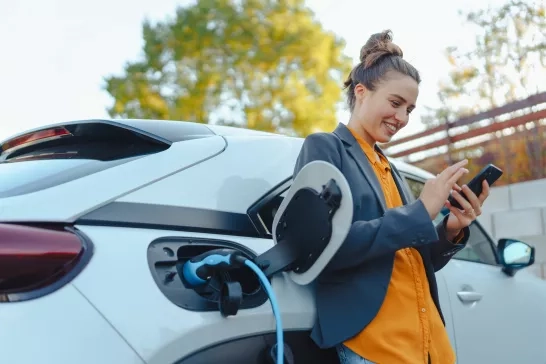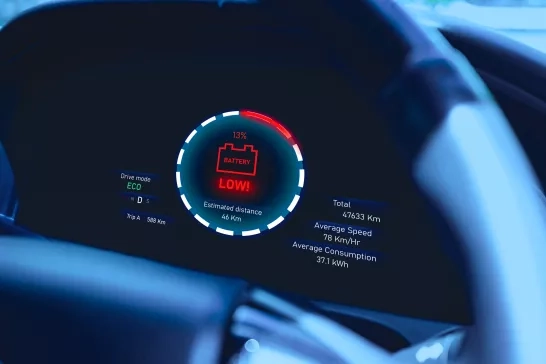Are electric cars good in winter? (The answer is yes!)
3 Minute Read
When William Skorupinski bought a Nissan Leaf electric vehicle in 2018, his wife Tricia had one question: How does an electric vehicle (EV) perform in the winter?
It was a fair question. After all, the couple lives in rural Ontario, near Ottawa, and their shiny new Leaf has a driving range of 250km. Her biggest concern was that if the car had a lower driving range in winter, would she find herself out of spark on the side of the road somewhere?
"I can tell you that, even with a driving range of 250km, which is lower than the newer models, we would not have a second thought about buying another EV," says William, Vice President of Automotive and Mobility Services at CAA North & East Ontario.
"There are so many advantages that offset the loss of range in winter. I would say that although Tricia wasn't happy because of range anxiety four years ago, she is much more comfortable now, even living in the country."
How winter weather affects electric cars
Just like your cellphone's lithium-ion battery, cold weather impacts lithium-ion batteries in electric cars. But how much of a performance drop does cold weather have on EV batteries?
Research by AAA found the average electric vehicle's driving range decreases by 40% when the outside temperature dips below -15C and the car's HVAC system is on.
Cold weather impacts EV battery performance partly because low temperatures affect the battery's chemical reactions. So, too, does using auxiliary functions like daytime running lights, defogging, and other power demands. The bigger issue is that cold weather driving simply puts more strain on the battery.
"A gas-powered vehicle gets a lot of warmth from the engine as it heats up. But with an EV, you need to keep the battery warm with a heater of its own on the coldest nights. The heater only kicks in when temperatures dip below -15C. Using the cabin heater is energy-intensive, so I see a 10% reduction in range from that," he says.
On the other hand, he notes that most EVs – his own included – can be programmed through the vehicle's app to pre-heat the cabin while the car is still plugged in before you leave home.
Do EVs handle well in Canadian winters?
According to both AAA and CAA, today's EVs handle winter driving conditions surprisingly well. Once considered too underpowered to safely navigate icy and snow-covered roads, EVs actually have a lower centre of gravity because their batteries are located under the floor.
"Electric vehicle owners I have talked with have told me that their electrics handle winter well," says John Paul, AAA Northeast's Car Doctor.
"This is the same experience I've had during my new car evaluations. The Chevrolet Bolt, for example, is a front-wheel drive and I found the traction typical or maybe slightly better than a conventional gasoline car of the same size."
How to make the most of an EV in winter
Make planning ahead a part of your driving habits
"We definitely plan ahead when we are using the Leaf," notes William. "We know where the charging stations are around the city and we only use the vehicle for city driving."
Don't let the battery charge drop too low
An electric car reserves about 15% to 20% of its charge capacity to heat the battery itself. Ensure you have at least 20% of its charge before you head out.
Use heat wisely
CAA recommends using the pre-conditioning feature on EVs to warm up the cabin while the car is still plugged in at home. In addition, consider EV models that offer heated seats and steering wheels, which are more efficient than cabin heating systems.
Park in a garage
Although not everyone has the luxury of a garage, keeping your car under a roof helps with battery charging speed and power retention.
Inflate your tires and switch to winter treads
Properly inflated tires are a must for vehicles, whether they are EVs or gas-powered, because they improve overall efficiency. Also, ensure you have winter tires engineered to work with an EV, so you don't decrease range. CAA Auto Insurance also offers a 5% discount for drivers installing their winter tires before November 20 and keeping them on until April 15.
Get informed before you buy
Although there aren't nearly as many options for EVs as there are for gas-power vehicles, the selection is improving. CAA has created an online EV Buyers' Guide, to help you navigate your way through the options. It's easy to navigate and full of tips for purchasing an electric vehicle.
1Auto Insurance is underwritten by CAA Insurance Company. Certain conditions, exclusions and underwriting eligibility rules apply.
Underwriting rules apply. The rating is applied to vehicles with four (4) winter tires that meet the winter tire designation. The tires must be installed no later than November 20 and removed no earlier than April 15, 2024.




